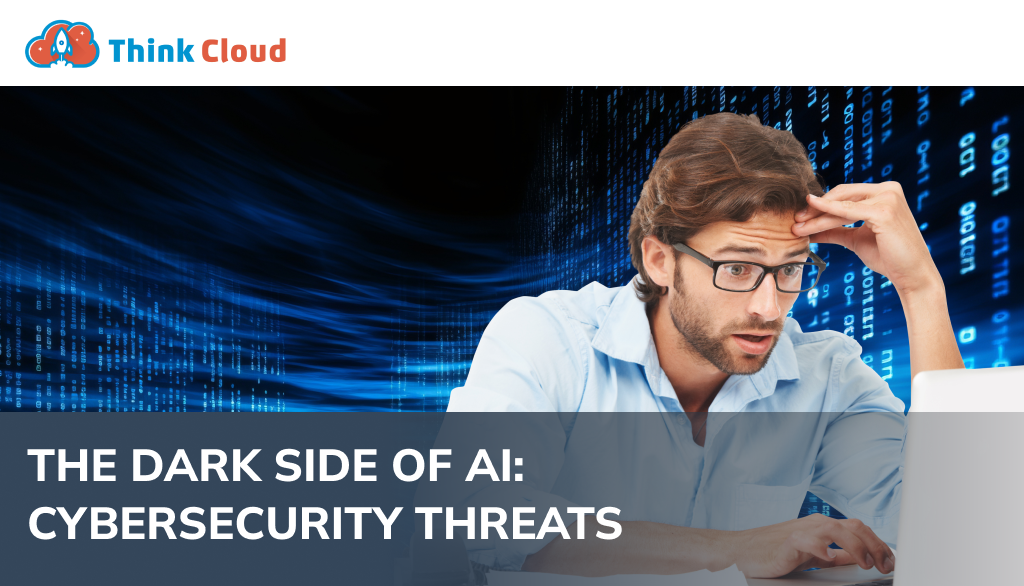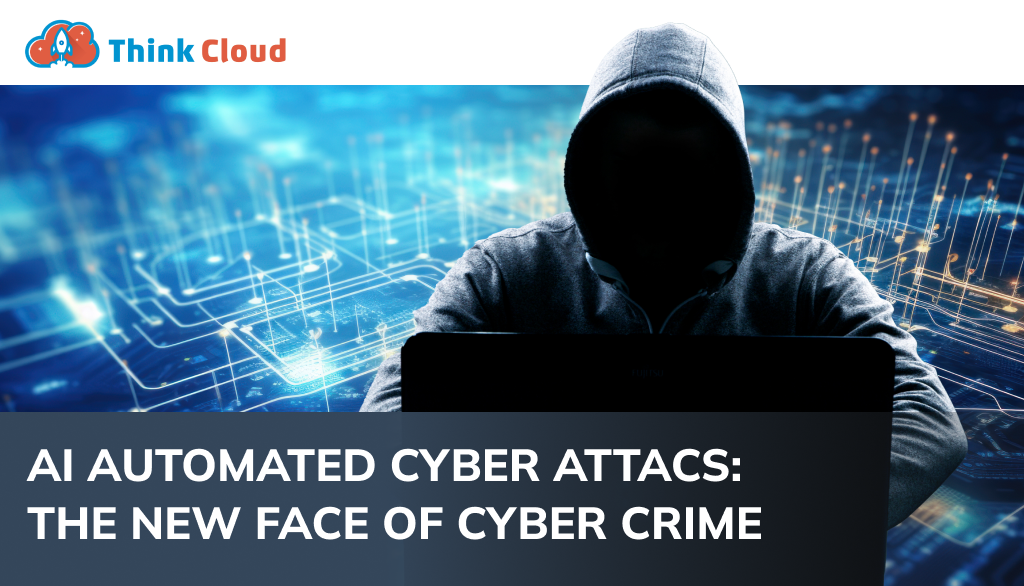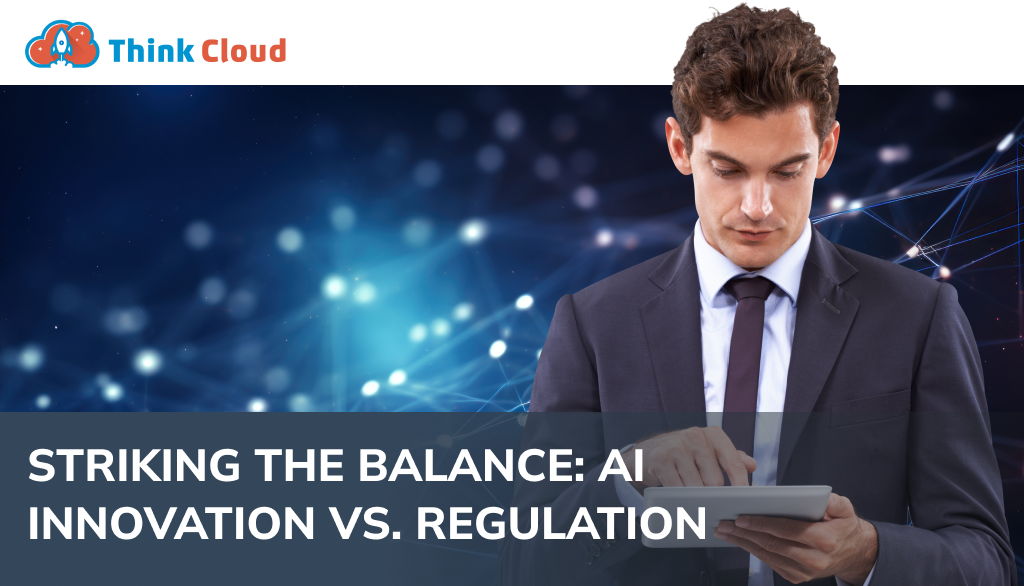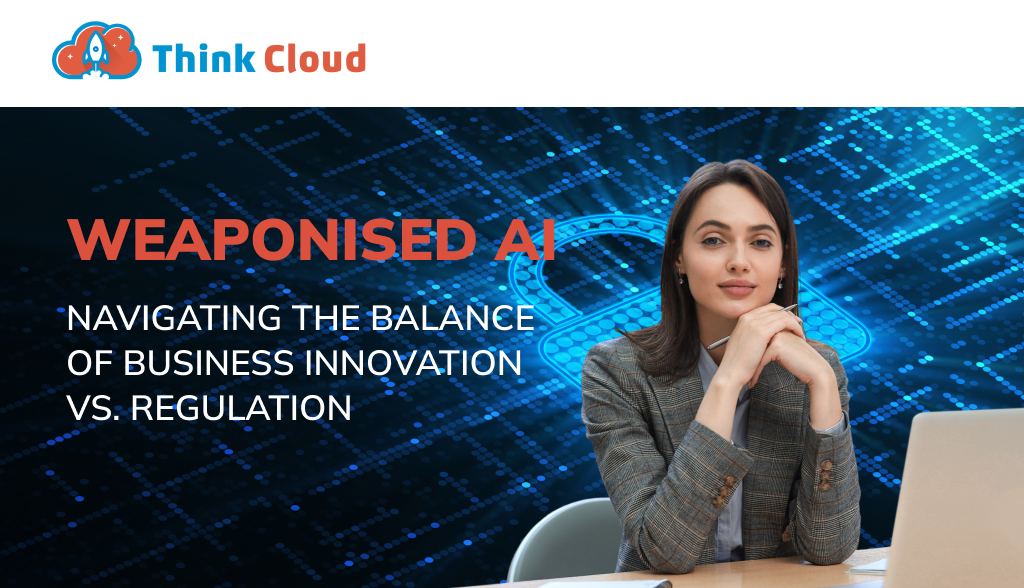Weaponised AI: Navigating the Balance of Business Innovation vs. Regulation
Content Quick Links:
Unlocking Insights into the Intersection of Technology, Ethics, and Security
Introduction
In a time when business innovation is fueled by swift technological progress, the negative aspects of these advancements are becoming more evident. The weaponisation of Artificial Intelligence (AI) by cyber attackers is not a theoretical peril anymore; instead, it has become an imminent threat that businesses all around the globe must confront and combat.
The recent publication of Forrester's latest report, "Top Cybersecurity Threats in 2023," sheds light on a growing concern: cyber attackers' weaponisation of generative AI and ChatGPT. This development underscores the need for heightened vigilance in the face of evolving cyber threats. The report highlights these technologies' potential risks, emphasising the importance of proactive measures to safeguard against cyber attacks.
This blog delves into the murky world of cyber threats and the delicate tightrope between harnessing AI's power for business growth and the need for robust regulation to protect against the insidious risks of social engineering techniques. Join us as we explore this complex landscape, shedding light on the challenges and potential strategies for navigating this terrain.
The Power of Business Innovation Through AI
In the age of digital transformation, businesses are continuously exploring new frontiers to gain a competitive edge. One such frontier is artificial intelligence (AI). AI has revolutionised the business landscape, offering unprecedented opportunities for innovation and growth.
From automating mundane tasks to predicting market trends with remarkable accuracy, AI is a game-changer. It streamlines operations, boosts productivity, and enhances customer experiences, thus driving profitability. For example, AI-powered chatbots have transformed customer service, providing instant responses and 24/7 support. Similarly, AI algorithms help businesses make data-driven decisions by analysing vast amounts of data and uncovering hidden patterns.
Looking ahead, AI holds immense potential. Imagine AI-powered drones delivering packages or AI systems predicting business risks before they occur. The possibilities are endless, but we must be aware of the challenges as we embrace this exciting future.

The Dark Side of AI: Cybersecurity Threats
As powerful as AI is in driving business innovation, with great power comes great responsibility. As businesses embrace AI, they must also acknowledge its dark side – weaponisation by cyber attackers.
Hackers are leveraging the speed and sophistication of AI to launch targeted attacks on businesses and individuals, exploiting its capabilities to hack into businesses' networks, steal sensitive information, and cause significant harm. These AI-powered cyber-attacks are sophisticated, relentless, and often undetectable until too late.
As businesses increasingly rely on AI, the risk of AI-powered cyber-attacks grows exponentially, highlighting the need for robust cybersecurity measures.

AI Automated Cyber Attacks: The New Face of Cyber Crime
Highly sophisticated AI-automated cyber attacks offer a level of speed, precision, and stealth that is unprecedented. Traditional manual cyber-attacks are becoming a thing of the past as AI-equipped cyber attackers can infiltrate networks, compromise systems, and exfiltrate data much faster and more covertly.
For instance, cybercriminals can use AI to launch phishing attacks at scale, tricking employees into revealing their login credentials. They can also use AI to analyse a network's behaviour, identify vulnerabilities, and launch targeted attacks.
One sinister application of AI in cyber attacks is through deepfake technology. Deepfakes use AI to generate synthetic media, such as altered audio clips or video footage, which can convincingly depict individuals doing or saying things they never did. This technology can be weaponised to impersonate high-ranking executives, tricking employees into transferring funds or revealing sensitive information.

This is a great example where Leon McQuade demonstrates how easily voice simulation AI can mimic his voice after only 15 minutes of audio training!
Another troubling trend is the rise of AI-driven ransomware attacks. Unlike traditional ransomware, AI-powered variants can intelligently navigate through a network, identify the most critical data, and encrypt it, demanding a ransom for its release. This targeted approach maximises the damage and increases the likelihood that businesses will pay the ransom.
Furthermore, AI enables cybercriminals to carry out 'evasion attacks'. These are designed to bypass traditional security measures by continually mutating and adapting their methods until they find a loophole. AI allows these attacks to occur at machine speed, making them incredibly efficient and difficult to catch.
The weaponisation of AI presents a profound challenge to cybersecurity, underscoring the need for businesses to stay one step ahead. The answer lies in implementing robust defensive strategies regulating the use of AI and fostering a culture of security awareness within organisations.
Striking the Balance: AI Innovation vs. Regulation
Regulation plays an essential role in controlling the potential damage that AI can cause. However, striking the right balance between fostering innovation and ensuring security is complex. Over-regulation can stifle innovation, while under-regulation can leave businesses vulnerable to cyber threats.
Addressing AI safety is crucial but should encourage innovation and encourage established players. Striking the right balance between regulation and promoting a diverse AI landscape is essential. Detecting AI-generated content and enabling source verification remain significant challenges.
To promote responsible AI development, governments and regulatory bodies should provide clear guidelines and standards that prioritise transparency, accountability, and security. It's crucial to strike a balance that doesn't burden smaller companies while ensuring compliance with reasonable safety measures. In such an environment, smaller players can thrive and contribute to advancing AI technology.

To promote competition, governments should consider facilitating access to resources, promoting fair licensing practices, and encouraging partnerships between established companies, educational institutions, and startups. This helps ensure innovation is unimpeded and diverse sources contribute to AI solutions. Scholarships, student visas, and public funding for AI development would also be beneficial.
To navigate this tightrope, businesses must adopt a proactive approach to AI regulation. This means staying updated with the latest regulatory developments, understanding their implications, and adapting accordingly. It also involves implementing robust cybersecurity measures, including AI-powered solutions, to protect against AI-powered threats.
Moreover, businesses must foster a culture of cybersecurity awareness. Employees should be educated about AI-powered cyber-attack risks and trained to identify and respond to such threats effectively.
Conclusion: Walking the Tightrope
Navigating the balance between business innovation and regulation in the era of weaponised AI is challenging but essential.
The potential misuse of AI and ChatGPT as weapons presents a notable peril to organisations and individuals. While legitimate concerns about regulatory measures hampering competition exist, it is crucial not to overlook the imperative of responsible AI advancement and global collaboration.
Businesses must harness the power of AI to drive innovation while mitigating the associated cybersecurity risks. This means implementing robust cybersecurity measures, staying updated with the latest regulatory developments, and fostering a culture of security awareness within organisations.
Governments must create an environment that ensures AI safety, encourages healthy competition, and fosters collaboration. This will help us address cybersecurity challenges and promote a diverse and resilient AI ecosystem.
By walking this tightrope, businesses can reap the benefits of AI while minimising its dark side – cyber threats. So, it's time businesses take proactive steps to protect their data and systems from AI-powered cyber attacks.
At Think Cloud, we can help you strike this balance. Our AI-powered cybersecurity solutions offer robust protection against AI-powered cyber threats, while our consulting services can guide you through the complex regulatory landscape. Let's walk this tightrope together, leveraging the power of AI while safeguarding your business from cyber threats. Contact us today to learn more.
THE NORTH’S PREMIER CYBER SECURITY & MANAGED IT PROVIDER!
At Think Cloud We Help You Work Faster, Work Smarter, Work Better - Together!
Based in the heart of the digital tech hub in Hull, East Yorkshire, find out how Think Cloud's award-winning IT Support can empower your business to operate more efficiently.
Award-Winning Cyber Security & IT Solutions for 10 - 250+ Staff.
Tagged as: Cyber Security, Insights
Share this post:

